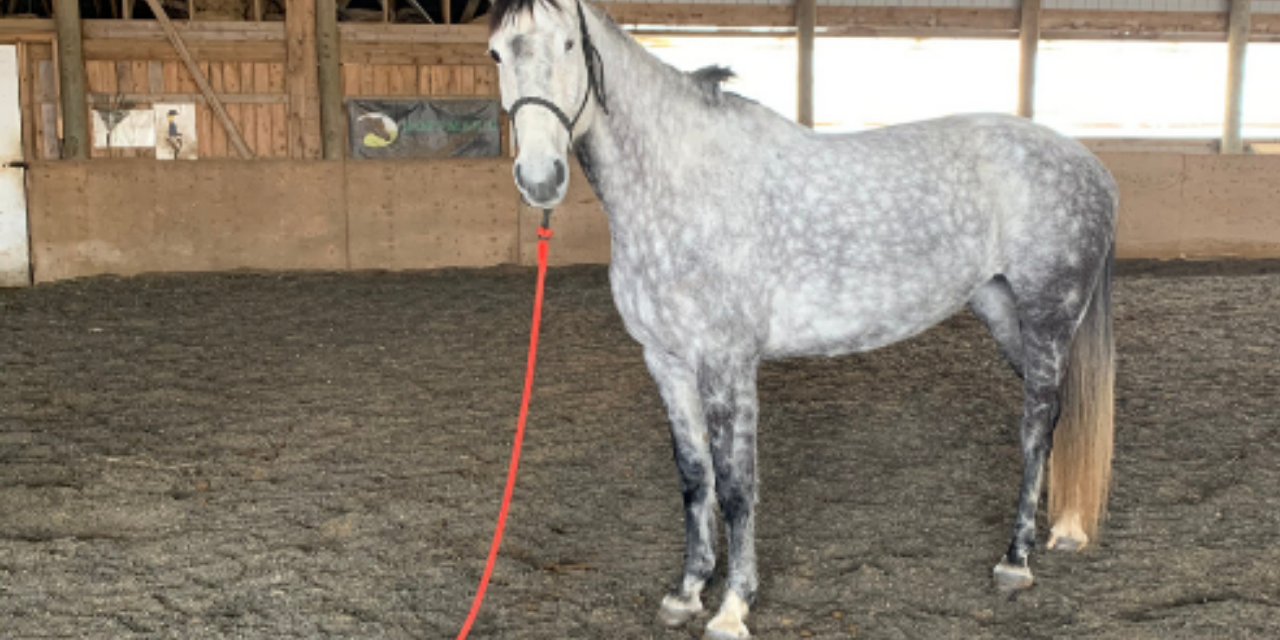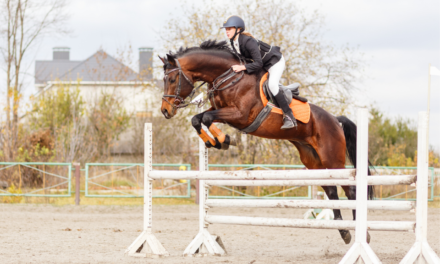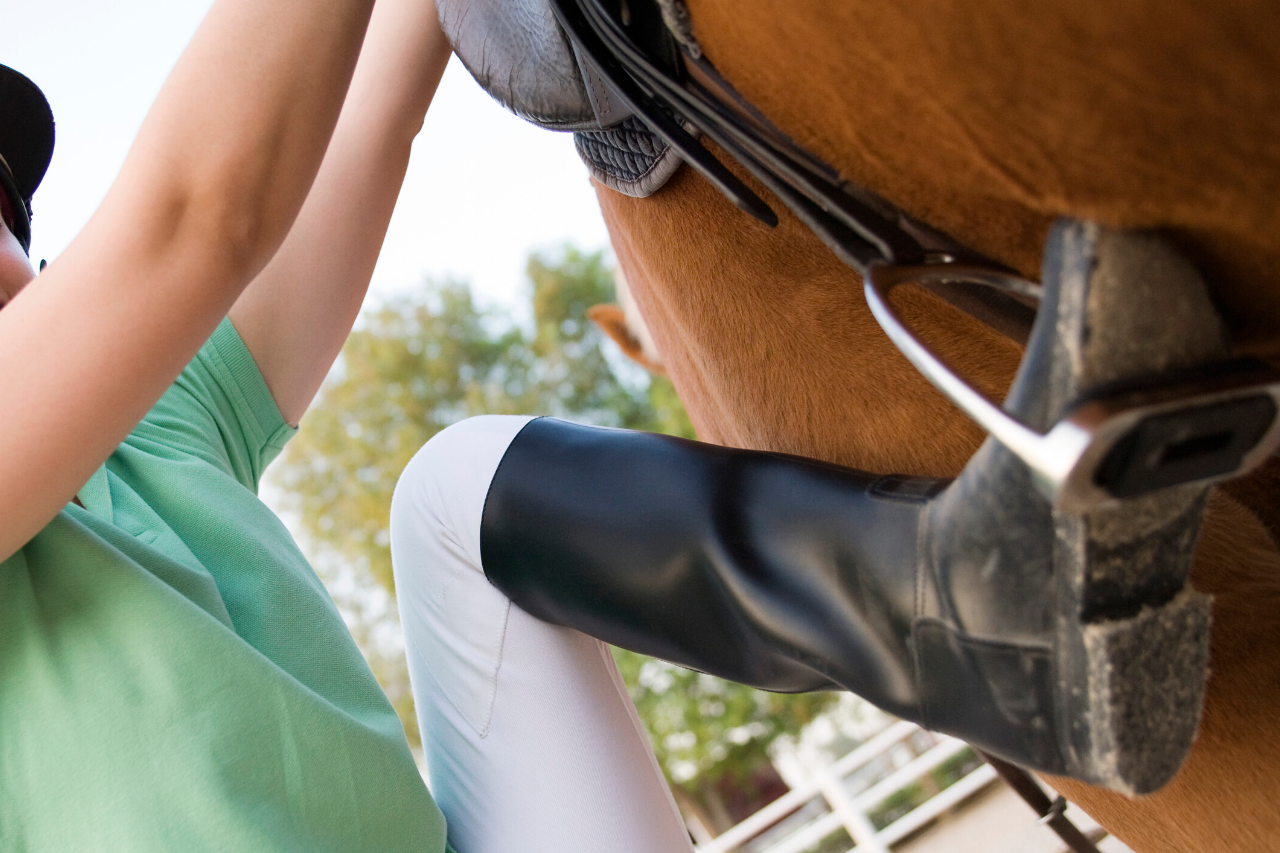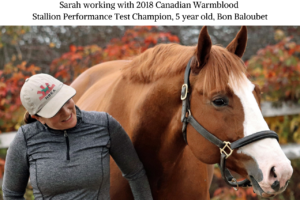We may earn money or products from the companies mentioned in this post. For more information please check out our disclosure page
What Is Ground Tying?
Ground tying is when a horse stands in the place you ask him to stand without being tied to anything and he doesn’t move away.
It is an exercise I teach every horse I train and it can be an important part of building our relationship together. Some people say it shows obedience, however, I prefer to think of it in terms of us developing an understanding, learning to speak the same language, and creating a bond where we understand each other.
When a horse learns to ground tie it tells me we have learned to communicate and developed a mutual trust and respect. I feel at this point we have developed a sincere bond where my horse is comfortable to be in a place of peace while patiently standing.
Prior to teaching your horse to ground tie you will need to teach your horse to stand still. Before teaching any horse to do an exercise like this I make sure they are strong candidates in halt, walk, and back up.
Make sure you are confident in the basics before asking your horse to ground tie.
These are also the 3 prerequisites to the 9 basic groundwork exercises I start with (you can get these for free when you apply on the form at the bottom of this page).
Equipment
You will need to use a rope halter with a 12 foot or 15 foot training rope. The training rope has a loop end that connects to the loop in the rope halter. Never use a metal clip to connect a rope to a training halter as this can cause pain when used and could make the horse head shy.
Teaching Your Horse To Stand Still
Using just your halter and rope ask your horse to stand squarely on an even surface.
Stand in front of your horse slightly to one side and facing him. Make sure you are not standing directly in front of your horse in case he takes off going forward.
Once you feel comfortable that your horse will stand when you move away, stay holding the rope and move a couple of steps backwards and further away from the horse as you progress in the exercise.
This is teaching your horse not to rely on your physical presence to stand. It will teach him to make the decision to stand by himself.
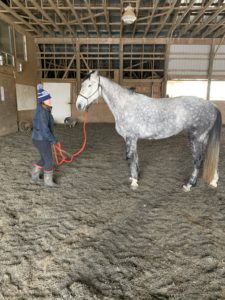
Ask your horse to stand quietly
Hold the training rope with plenty of slack (no tension or direct contact with the horse). I ask the horse to stand and gradually back away a couple of steps with the rope remaining slack and stand with the new distance between us.
If the horse attempts to move when I move I use soft tones and ask my horse to remain standing, I don’t continue to move away until the horse seems to be happy to stand again.
Your horse will probably not understand what you mean at first so you will correct him, showing him what you want by flicking your wrist from side to side (some trainers use an up and down motion but I prefer side to side as it is less likely to make a nervous horse head shy). The flicking of the wrist will send a wave through the rope towards your horse.
A second method, which is the one I usually use, is to swing the rope round and round in the direction of the horse until it is standing where you want it to be and then you stop.
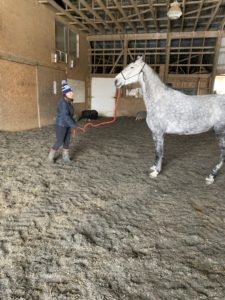
If your horse tries to take a step, correct and ask your horse to stand again
NOTE: When your horse moves, correct him immediately.
Continue working with your horse in this manner until he stands still for several minutes without a correction.
Gradually stand farther and farther away from your horse, until you reach the end of the long lead allowing the lead rope to loop and touch the ground directly below the horses head. The rope will run along the ground to your hand.
Practice moving from side to side, making sure your horse doesn’t move and correcting him if he does.
When I start a horse on this exercise I always do it where I plan to cross tie them, this way they get comfortable in a space they are going to be using a lot. Continual reinforcement in the same place will also help your horse get your horse used to the pattern of communication between you.
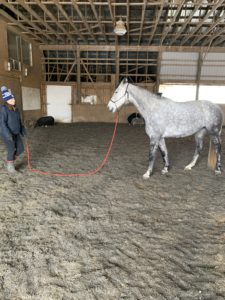
Move further away from your horse with the rope on the ground, encouraging your horse to remain still
Your horse learns to recognize the expectations from you and it eventually becomes second nature.
Getting Your Horse to Ground Tie
Once your horse is responding correctly and knows how to stand still you can drop the rope end you have been holding. Stay where close enough for you to pick it up should your horse try to move away.
When you are confident your horse is happy standing still without moving while the rope is on the ground you can walk towards him, then back away again, then left and right. All the time the horse should remain still. Administer corrections and repeat again if he moves.
It is rare for a horse to learn to do this in one session so be prepared to make this training a part of your daily routine for a while.
When you feel your horse is standing without you holding the rope, carefully walk around your horse with the rope on the ground. Be ready for a mistake and be prepared to correct your horse and encourage it to remain in the same place. Patience, as always, is key!
Testing with the walk away.
Now it’s time to test your horse a bit more. Position the lead rope so it hangs down from your horse’s halter and lay the excess on the ground. Slowly walk a few steps away from him and stop.
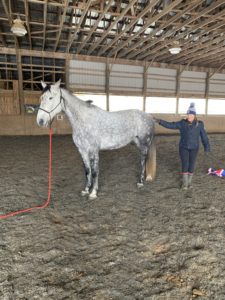
Walk quietly around your horse while the rope is on the ground
If your horse takes a step move quietly to the lead rope and patiently correct him. Lead your horse back to his original location. Repeat this exercise until he stands still when you walk a few steps away.
Gradually increase your distance until you can walk away from him in any direction and he doesn’t move.
Increase the time your horse will stand ground-tied by practicing this exercise when you groom and tack up. Test him frequently; look for opportunities to ground-tie him, even if only for a minute.
Ultimately once you and your horse have mastered the above you should be able to walk away and do other things close to him, such as get your tack, etc. and know that he will remain in the same place. Your horse at this point should trust you and know that you have placed him in a position where he feels safe and he has no reason to leave.
Having said this, I never leave my horses unattended! My tack and work area are in the same place I ground tie or cross tie my horses. They have reached a point of routine and understand what our language is. They are happy to stand ground tied, or cross tied, in the place where we ‘hang out’ together.
Ground tying is a great exercise for your horse to learn and it will make you feel like you have achieved an important step in your communication together!
I hope this helps and don’t hesitate to contact me with your questions!
admin
Latest posts by admin (see all)
- A Horse For All Reasons – Guest Blog by Lucy from Horse Factbook - April 8, 2020
- How To Deal With A Spooky Horse Trail Riding - March 31, 2020
- Our Top 20 Amazon Equestrian Products - January 30, 2020

